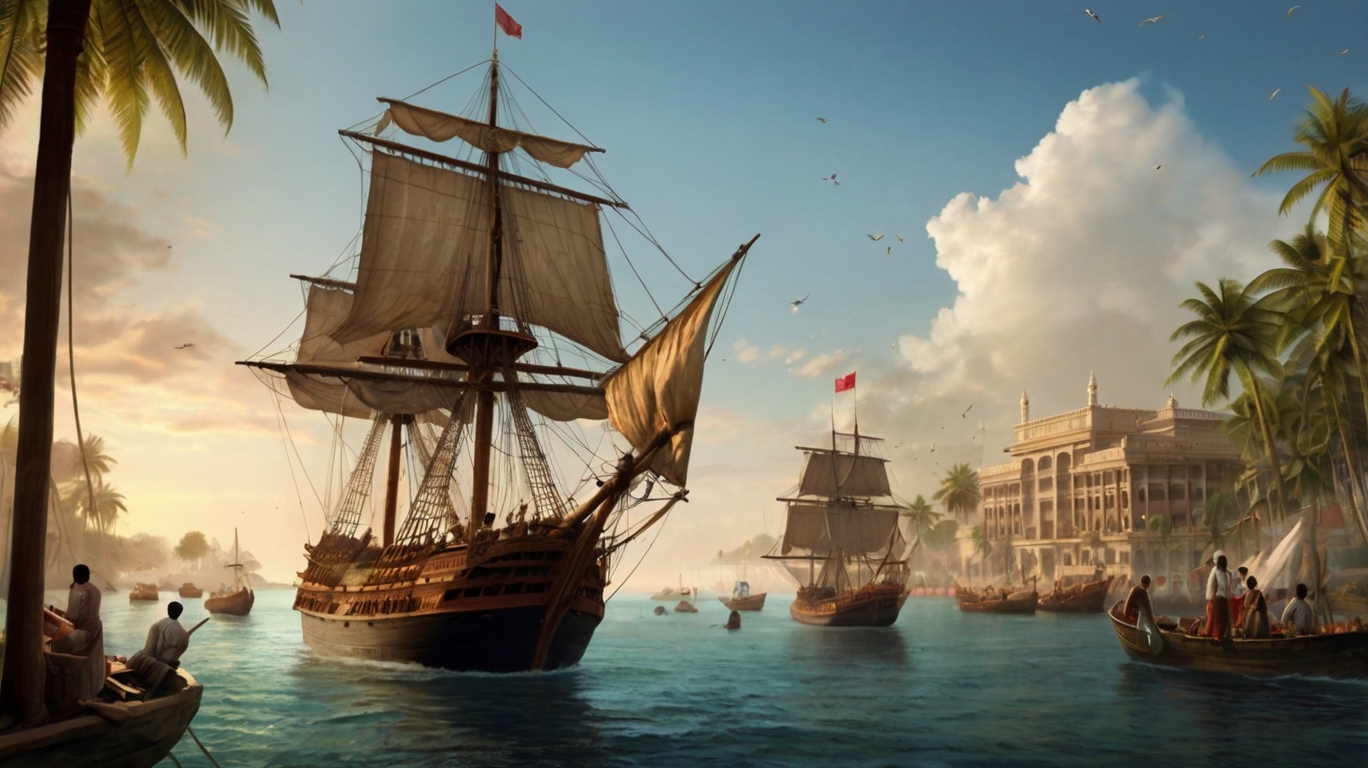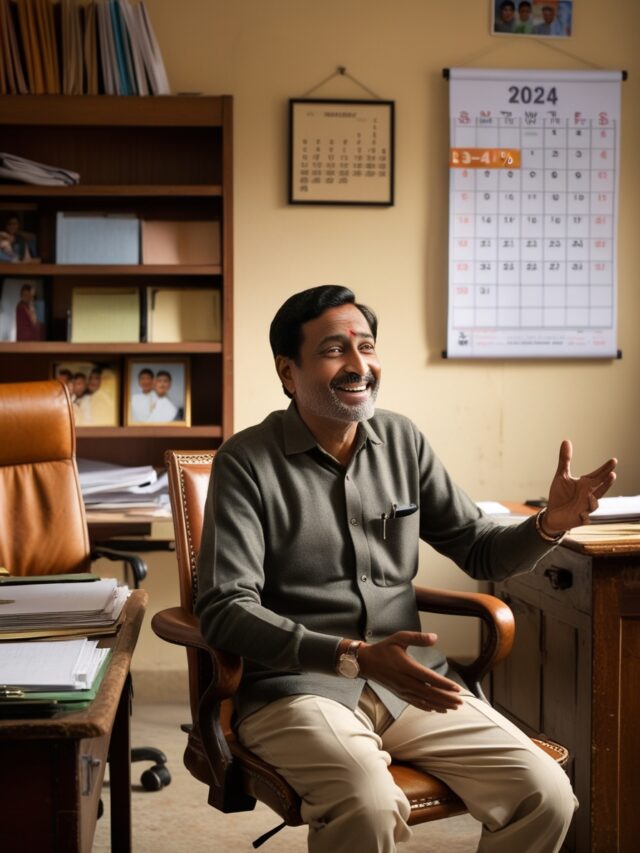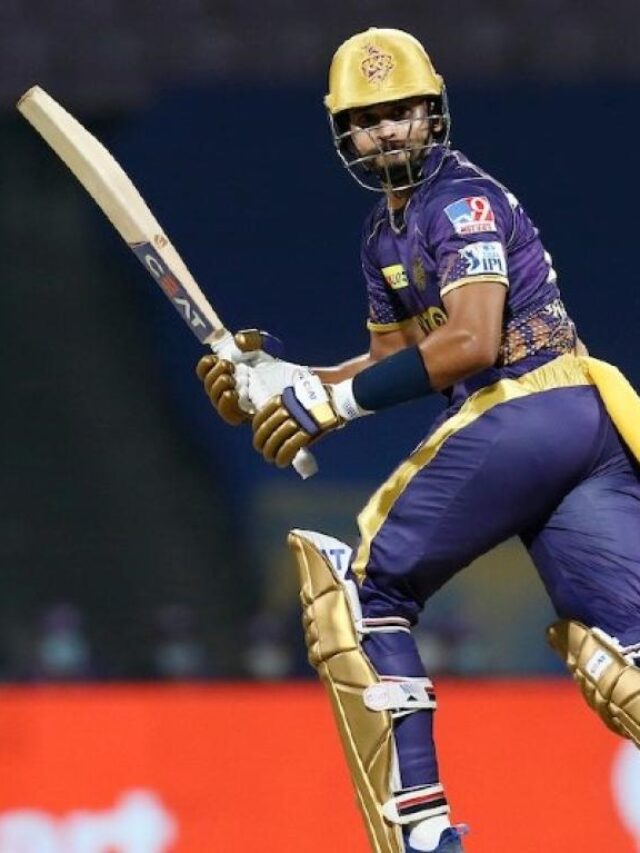
1. In which year did the East India Company acquire Bombay from the Portuguese?
- 1663
- 1668
- 1670
- 1689
Show Answer
Answer: 1668
In 1668, through the Royal Charter, Charles II of England transferred the island of Bombay to the British East India Company. This transaction occurred in exchange for an annual rent of £10 paid by the East India Company to the British Crown. This acquisition marked the beginning of the East India Company’s presence in Bombay, a significant strategic and trading hub, and they promptly fortified the island.
2. Which among the following British men tried to obtain a Firman for trade in Gujarat from Emperor Akbar?
- Ralph Fitch
- John Mildenhall
- Sir Thomas Roe
- Thomas Stephens
Show Answer
Answer: John Mildenhall
John Mildenhall was an early British explorer and adventurer who embarked on one of the first recorded overland journeys to India during the late 16th century. He is also known for being the self-styled ambassador of the British East India Company in India. Mildenhall is credited with the first recorded burial of an Englishman in India. However, it’s important to note that he used a diplomatic bluff by claiming to be Her Britannic Majesty’s ambassador in Akbar’s court. Unfortunately, he was unable to gain the full confidence of the Mughal Emperor Akbar during his time in India.
3. On which occasion was Bombay handed over to the Britishers by the Portuguese?
- Freedom of Portuguese from the control of Spain
- Marriage of Charles II with the Portuguese princess Catherine of Braganza
- Crushing of the Spanish Armada by the British in 1588
- The Treaty of Madrid in 1630
Show Answer
Answer: Marriage of Charles II with the Portuguese princess Catherine of Braganza
The transfer of Bombay to the British East India Company can be linked to the marriage of Charles II of England with Catherine of Braganza, a Portuguese princess. As part of Catherine’s dowry, the Portuguese ceded Bombay to the British. This marriage arrangement played a crucial role in the British acquisition of Bombay.
4. Which among the following apparently impressed Jahangir to issue a farman in 1613 A.D. to the English to establish a factory at Surat?
- Reconciliation between the English and Portuguese
- A secret offer of naval help to the Mughal emperor to oust the Portuguese
- A heavy dose of bribe to Nur Jahan
- The defeat of Portuguese naval squadrons by the English
Show Answer
Answer: The defeat of Portuguese naval squadrons by the English
During the early 17th century, the English achieved significant naval victories over Portuguese forces in the Indian Ocean. These victories caught the attention of Jahangir, the Mughal Emperor, and in 1613, he issued a farman (royal decree) granting the English the permission to establish a trading factory at Surat, recognizing their naval prowess.
5. Where waws the first English trade post on the eastern coast of India established?s?
- Madras
- Pettapooly (Pulicat)
- Masulipatnam
- Vizag
Show Answer
Answer: Pettapooly (Pulicat)
The first English trading post on the eastern coast of India was set up at Pettapooly, also known as Pulicat. This location was situated approximately 36 miles west of Masulipatnam. Captain Hippon arrived there aboard the ship “Globe” on August 20, 1611, marking an early English establishment on the eastern coast for trade and commerce.
6. In which year were the custom duties completely waived for the East India Company?
- 1711
- 1715
- 1717
- 1720
Show Answer
Answer: 1717
In 1717, Mughal Emperor Farrukhsiyar issued a significant firman to the East India Company. This decree exempted the company from paying import and export duties, providing them with a significant advantage by freeing them from customs duties, effectively acting as a Magna Carta for the company. This exemption allowed the company to engage in trade with greater freedom and reduced financial burdens.
7. In the name of which Mughal emperor did the East India Company strike the first coins in India?
- Jahangir
- Mughal emperor
- Farrukhsiyar Muhammad Shah
- Jahandar Shah
Show Answer
Answer: Mughal emperor
Farrukhsiyar, a Mughal emperor, granted the East India Company permission to mint its own coins in 1717. This meant that the company could issue its currency, a privilege that was exercised in his name. The ability to mint coins provided the company with greater financial autonomy and control over their trade activities.
8. The first coins under the authority of the East India Company were struck in the mint at which of the following places?
- Hooghly
- Murshidabad
- Calcutta
- Bombay
Show Answer
Answer: Bombay
Emperor Farrukhsiyar granted the East India Company the right to mint coins in Mughal style at the Bombay Mint in 1717. The coins they produced included the Carolina (gold), anglina (silver), cupperoon (copper), and tinny (tin). This privilege allowed the company to establish a monetary system for its trade and financial transactions.
9. Which of the following is a first-hand authority for much of what happened in Rajputana and Malwa between 1657 and 1698?
- Alamgirnama
- Ma’asir-i-Alamgiri
- Futuhat-i-Alamgiri
- Muntakhab-ul-Lubab
Show Answer
Answer: Muntakhab-ul-Lubab
The “Futuhat-i-Alamgiri” is an important historical work written by Isar Das Nagar, a Mughal officer. This document serves as a valuable first-hand source for events in the regions of Rajputana and Malwa between 1657 and 1698, providing insights into historical events and the reign of Aurangzeb, the Mughal emperor. Isar Das Nagar, who held the charge of the Sarkar of Jodhpur for an extended period, documented significant occurrences during his time.
Q10: The Battle of Hooghly was fought between which of the following powers?
1. English vs Dutch
2. English vs Portuguese
3. Dutch vs Danes
4. Dutch vs Portuguese
Show Answer
Answer: 1
Explanation: The Battle of Hooghly, alternatively known as the Battle of Chinsura, took place in 1759 and was fought between the English and the Dutch colonial forces in India. The outcome of this battle played a crucial role in establishing British supremacy in the Hooghly-Chinsura region, contributing to the British East India Company’s ascendancy in that area.
Q11: When did the English East India Company receive the Royal charter?
1. 1508
2. 1519
3. 1600
4. 1618
Show Answer
Answer: 3
Explanation: On December 31, 1600, Queen Elizabeth I granted a Royal Charter to the English East India Company. This charter provided the company with official approval and authority to engage in trading activities in the East Indies, laying the foundation for British trade with the East.
Q12: What was the primary objective of the East India Company in India?
1. Trading
2. Building Empire
3. Hegemony over Indian ocean
4. None of the above
Show Answer
Answer: 1
Explanation: The British East India Company initially operated in India with the primary goal of trade. Over time, they recognized the advantages of building and expanding their influence in India. As a result, they transitioned from being primarily traders to gradually consolidating their power through a series of battles and conflicts, ultimately leading to their dominance and control over various regions in India.
Q13: Who conducted the first voyage of the East India Company to the East Indies?
1. Queen Elizabeth I
2. Thomas Munro
3. Sir James Lancaster
4. Captain Hawkings
Show Answer
Answer: 3
Explanation: In 1601, Sir James Lancaster led the first voyage to the East Indies. The ship used for this historic journey was named the Red Dragon. This voyage marked the early endeavors of the English in establishing trade connections with the East Indies.
Q14: For how many years did Queen Elizabeth I initially approve the charter to the East India Company?
1. 5 years
2. 7 years
3. 10 years
4. 15 years
Show Answer
Answer: 4
Explanation: When Queen Elizabeth I granted the charter to the English East India Company, it was initially approved for a period of 15 years. This meant that the company was granted exclusive trading privileges for this duration. Additionally, the charter included a provision that allowed the Crown to repeal it with a two-year notice.
Q15: In which year Captain Hawkings reached Jahangir’s court?
1. 1601
2. 1605
3. 1609
4. 1615
Show Answer
Answer: 3
Explanation: In April 1609, Captain William Hawkins reached the court of Mughal Emperor Jahangir. Despite securing initial permission from the Mughal authorities to establish a trading factory at Surat, this permission was subsequently revoked due to strong opposition from the Portuguese, who sought to maintain their trading monopoly in the region.
Q16: What was the name of the ship of Captain Hawkings by which he came to Surat?
1. Red Dragon
2. Hector
3. Khaibar
4. Majesty
Show Answer
Answer: 2
Explanation: In 1607, Captain William Hawkins embarked on his journey to the Mughal court of Jahangir with a letter from King James I of England. His ship was named the Hector. This mission was one of the early attempts to establish English trade relations with the Mughal Empire.
Q17: In which year Captain Best defeated the Portuguese?
1. 1601
2. 1605
3. 1612
4. 1615
Show Answer
Answer: 3
Explanation: Captain Thomas Best achieved a significant victory over the Portuguese in 1612. This victory impressed the local governors of Mughal Emperor Jahangir’s court. As a result, he was granted a Mughal firman (royal decree) that allowed the English to establish a trading factory in Surat, marking a significant step in their trading endeavors in India.
Q18: In which year did Sir Thomas Roe come to Jahangir’s court?
1. 1601
2. 1605
3. 1609
4. 1615
Show Answer
Answer: 4
Explanation: Sir Thomas Roe arrived at the court of Mughal Emperor Jahangir in 1615 as an ambassador representing King James I of England. During his diplomatic mission, Jahangir granted him certain privileges and rights, which were essential for English trading and diplomatic activities in India.
Q19: In which places did Jahangir grant Thomas Roe to set up factories?
1. Ahmedabad
2. Broach
3. Agra
4. All of the above
Show Answer
Answer: 4
Explanation: As part of the agreements reached during his diplomatic mission, Sir Thomas Roe secured permission from Mughal Emperor Jahangir to establish English trading factories at several important locations in India, including Ahmedabad, Agra, and Broach. This marked a significant expansion of English trade in the region.
Q20: Who helped the English to capture Ormuz by defeating the Portuguese?
1. Jahangir
2. King of Iran
3. King of France
4. Samuthiri
Show Answer
Answer: 2
Explanation: Shah Abbas, the King of Iran, played a crucial role in assisting the English in capturing the strategic port of Ormuz in 1622. This event occurred after Shah Abbas’s forces defeated the Portuguese, who had previously controlled the city.
Q21: Who issued the Golden Farman in favor of the British East India Company in 1632?
1. Abdullah Qutb Shah
2. Muhammad Quli Qutb Shah
3. Abul Hasan Qutb Shah
4. Jamsheed Quli Qutb Shah
Show Answer
Answer: 1
Explanation: In 1632, the Sultan of Golconda, Abdullah Qutb Shah, issued a decree known as the Golden Farman to the East India Company. This firman not only allowed the company to reopen its trading factory at Masulipatam but also improved their overall standing and trade privileges, further enhancing their position in the region.
Q22: When did the English set up a factory in Hooghly (Bengal)?
1. 1585
2. 1600
3. 1651
4. 1667
Show Answer
Answer: 3
Explanation: Shah Shuja, the ruler of Bengal, agreed to permit English trade in his domain for an annual payment of Rs 3000. As a result, the English established a trading factory in Hooghly in the year 1651, marking their presence and trade activities in the Bengal region.
Q23: Who led the English mission to the court of the Mughal emperor Farrukshiyar in 1715?
1. William Hawkings
2. Thomas Roe
3. William Aldworth
4. John Surman
Show Answer
Answer: 4
Explanation: The Surman Embassy, named after its chief diplomat John Surman, was an English mission dispatched to the court of Mughal Emperor Farrukshiyar in 1715. The mission consisted of John Surman, an interpreter, a secretary, and a physician named Dr. Hamilton. The embassy succeeded in obtaining three separate farmans (decrees or edicts) from Farrukshiyar for each of the three British presidencies in India—Bengal, Bombay, and Madras. These farmans are highly significant and are often referred to as the Magna Carta of the East India Company as they conferred significant trading privileges and rights to the company.
Q24: The first factory of the company in East India was set up in which of the following places?
1. Hariharpur
2. Bhadrak
3. Sambalpur
4. Ganjam
Show Answer
Answer: 1
Explanation: The East India Company established its first factory in East India in the year 1633. This factory was set up in Hariharpur, located in the Balasore district of Odisha, marking one of the early steps in the company’s expansion and establishment in the region.
Q25: Who among the following was the first Englishman to reach India by sea route?
1. Captain Hawkins
2. John Mildenhall
3. Ralph Fitch
4. Thomas Stephens
Show Answer
Answer: 4
Explanation: Thomas Stephens is credited as the first Englishman to reach India via a sea route. He embarked on this journey on April 4, 1579, sailing on a Portuguese ship as a Jesuit missionary. His voyage took approximately six months, and he landed at Goa on October 24, 1579. Stephens’ arrival marked an early instance of English presence in India.
Q26: What was the name of the first English ship that arrived in India?
1. Elizabeth
2. Titanic
3. Red Dragon
4. Mayflower
Show Answer
Answer: 3
Explanation: The first English ship to arrive in India was named the Red Dragon. This ship played a notable role in early encounters between the English and the Portuguese, including the Battle of Swally in 1612. The Red Dragon was involved in multiple voyages to the East Indies, contributing to the establishment of English maritime activities in the region.
Q27: Which fort was the first one constructed by the Britishers in India?
1. Fort St. Angelo
2. Fort St. George
3. Fort St. David
4. Fort William
Show Answer
Answer: 2
Explanation: Fort St George, established in 1644 CE, is regarded as the first fort constructed by the British in India. It was founded in the coastal city of Madras, which is known today as Chennai. This fort marked a significant early British presence in India and served as a pivotal location for their activities in the region.
Q28: During the reign of which ruler was the British East India Company formed?
1. Henry VIII
2. James I
3. Charles I
4. Elizabeth I
Show Answer
Answer: 4
Explanation: The British East India Company was established during the reign of Queen Elizabeth I. In 1600 CE, Queen Elizabeth granted the company a Royal Charter, which provided it with official recognition and legal authority to engage in trade and commerce in the East Indies, marking the beginning of the company’s operations in India.
Q29: Which English governor of the East India Company in India was expelled by Aurangzeb?
1. Aungier
2. Sir John Child
3. Sir John William
4. Sir Nicholas Waite
Show Answer
Answer: 2
Explanation: Aurangzeb, the Mughal emperor, expelled Sir John Child, who was serving as the English Governor of the East India Company in India. Their disputes escalated to the point of conflict, leading to a war between the English and Aurangzeb’s forces. This episode exemplified the tensions and power struggles between the British East India Company and the Mughal Empire.
Q30: Who granted permission to establish the first British factory at Hoogly in Bengal?
1. Shah Shuja
2. Murshid Quli Khan
3. Shujauddin
4. Alivardi Khan
Show Answer
Answer: 1
Explanation: Shah Shuja granted permission to establish the first British factory at Hoogly in Bengal. Shah Shuja was the son of Shahjahan and Mumtaz and acted as the governor of Bengal and Odisha.








Leave a Reply